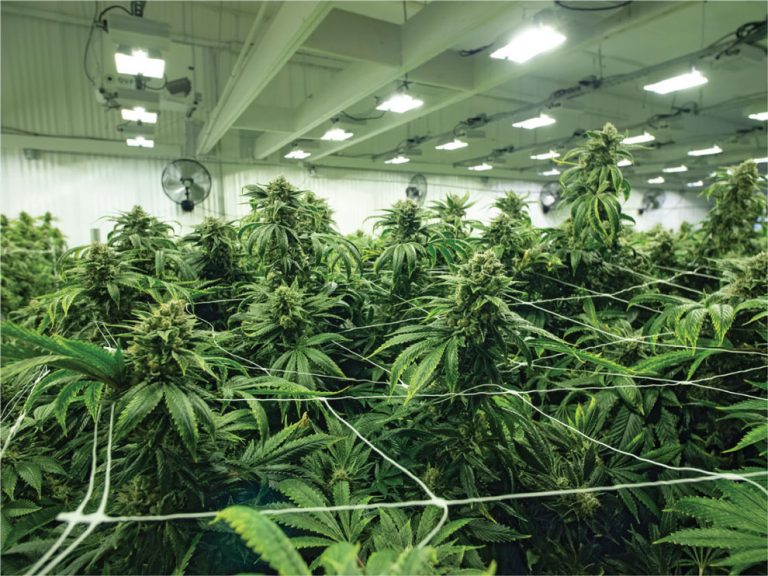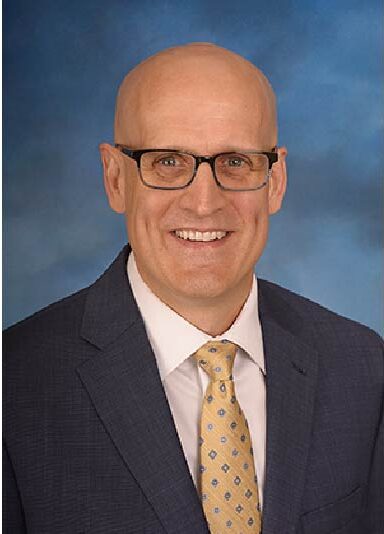
The 2018 Farm Bill legalized hemp, but what does that mean for farmers and how will actuaries play a role in developing crop insurance for it?
Marijuana has been in the news lately as multiple states have legalized it even though the Drug Enforcement Administration still lists it as a Schedule I drug. Hemp is another product of the cannabis plant that is getting some legal support at the federal level. The 2018 Farm Bill defined hemp as “the plant Cannabis sativa L. and any part of that plant, including the seeds thereof and all derivatives, extracts, cannabinoids, isomers, acids, salts, and salts of isomers, whether growing or not” and specifies the limitation “with a delta-9 tetrahydrocannabinol (THC) concentration of not more than 0.3 percent on a dry weight basis.” The limit exists because THC is the part of the cannabis plant that makes people high. The Agricultural Act of 2014 allowed industrial hemp cultivation under state-controlled pilot programs, but the 2018 Farm Bill put in regulations to expand farming hemp. The 2018 bill requires states and tribal governments to develop a plan to monitor the amount of THC in the plants and dispose of any that exceed the 0.3% level.
What uses are there for hemp that would make it a valuable crop to grow? Hemp fiber has been touted as being better for the environment than cotton and CBD (cannabidiol) oil derived from the Cannabis sativa plant1 has more significant monetary value. CBD oil is being studied for possible medical uses, but even without proven results, a 1-ounce bottle of CBD tincture with 300 milligrams of CBD can sell for $50.2 Worldwide legal production has grown from 1.3 tons in 2000 to 100.2 tons in 2015, with about half grown in Canada and most of the rest in the United Kingdom. In 2015, the United States imported 25.1 tons.3
In the United States, farmers who want to plant hemp face many issues, including where they can buy the seeds and whether they need new machinery to harvest the crop. Also, the return they can expect from their harvest is uncertain and federal crop insurance is not currently available to cover the farming risks. Farmers often obtain loans to buy seeds, which can cost $7 per pound on hemp varieties grown for fiber4 and $0.25 to $1 per seed for the type of hemp that produces CBD oil.5 These loans can be difficult to acquire as banks are more likely to lend to farmers who have crop insurance. In Illinois 12,000 acres of hemp are being planted, mostly for CBD oil, but that makes up less than 0.1% of total farmland in the state. Currently, 86%6 of insurable farming acreage in the U.S. is insured through federal crop insurance. The remaining 14% is either uninsured or only insured through private insurance, like crop hail coverage.
There are two main types of crop insurance, and farmers can choose to buy neither, one or both. Private crop hail insurance probably has a smaller market penetration partly because the premiums are not federally subsidized and covers only hail losses. Federal crop insurance, on the other hand, is regulated, subsidized and reinsured by the federal government. The subsidies and reinsurance over the next 10 years of the federal crop insurance program are budgeted at 9%7 of the $867 billion8 price of the 2018 Farm Bill.
The 1996 Farm Bill created the Risk Management Agency to administer the Federal Crop Insurance Corporation (FCIC) and in the 2000 Farm Bill, Congress “expanded the role of the private sector allowing entities to participate in conducting research and development of new insurance products and features.”9
Federal crop insurance is also known as multi-peril crop insurance (MPCI) because it covers additional causes of loss such as drought, flood and decreased crop prices. MPCI functions by guaranteeing a certain revenue or yield, usually based on historical experience.
MPCI is a combined effort between the federal government and the private companies that have been approved by the federal government to sell crop insurance. These Approved Insurance Providers (AIPs) must take all comers, but they can choose to keep policies in their “commercial fund” or cede up to 75% of their premium by state to the “assigned risk fund,” where the federal government takes an 80% quota share of the business. It is quite likely that actuaries at one or several of the AIPs will help develop rates for crop insurance for hemp. The federal government also acts as a reinsurer sharing in the profits and accepting the losses as illustrated in Figure 1. These rules are all presented in the Standard Reinsurance Agreement (SRA) that is updated each year by the FCIC.
For gross loss ratios under 100%, the federal government shares part of the profits, increasing the AIPs’ net loss ratios. If the gross loss ratios are above 100%, the federal government shares part of the losses, decreasing the AIPs’ net loss ratios. There are three sets of net loss ratios, with the assigned risk net loss ratios having the narrowest band of possible outcomes, from 88.6% to 116.5%. Policies kept in the commercial fund are separated into two groups: polices written in the Corn Belt states and policies written elsewhere. The Corn Belt states are Kansas, Illinois, Iowa, Indiana, Missouri and Nebraska. A lot of money can be made by insuring in the Corn Belt states, so in an effort to make sure the AIPs would operate elsewhere, the FCIC created net loss ratios that gave the other states more profit and less loss potential as an incentive. Thus, Corn Belt states’ net loss ratios can be from 65.25% to 194%, while the other states can have net loss ratios from 57.4% to 151.5%.


Figure 2 is a small section of Figure 1 and will clarify the following example:
If an AIP wrote $10M of gross premium in their commercial fund in Iowa and had a gross loss ratio of 75%, their net loss ratio would be 81.25% since Iowa is in the Corn Belt. This means gross premium would be $2.5 million higher than gross losses, but the net difference between premium and losses would be $1.875 million, meaning that the FCIC would profit by $625,000. If this AIP put $8 million of premium in Iowa in the assigned risk fund, in the first step, 80% would be ceded to FCIC, leaving premium net of quota share at $1.6 million. Then if the assigned risk’s gross loss ratio was 115%, the AIP’s assigned risk net loss ratio would be 101.125%, resulting in $18,000 underwriting losses. Most AIPs would probably heavily use the assigned risk fund for a new and volatile crop like hemp.
There are several types of MPCI policies but the one most likely to be used for hemp is the Actual Production History (APH) policy, which is used for crops like oats, rye and tobacco. APH policies provide a guarantee based on coverage levels and the farmer’s actual production history, the number of acres planted and the farmer’s percentage share of the land. If the yield does not reach the guarantee, the insurance pays the difference between the guarantee and what the farmer made. Farmers can usually select within the range of 50% to 75% coverage, implying a deductible of 50% to 25%.
Guarantee = APH Approved Yield x Coverage Level x Acres Planted x Farmer’s Share. (1)
Given a Loss, Indemnity Payment = (Guarantee – Actual Yield) x FCIC Price. (2)
The APH approved yield is based on the farmer’s actual production history when available. With a new crop like hemp, there will need to be transitional yields. The 2014 Farm Bill allowed industrial hemp cultivation under state-controlled pilot programs,10 so some history of production exists. Steve Rutledge, president and owner of Professional Land Management, has grown hemp for fiber and harvested 1 to 2.5 tons per acre11 in the last three years. But 2015 through 2018 were good years for most crops, so that production might be higher than average. On the other hand, that production might turn out to be lower than average if farmers are still learning the best way to cultivate the plants. A transitional yield might be an average of 1.8 tons for the counties in Kentucky where Rutledge was farming. For other areas, insurance companies might compare the differential in yield of other crops and apply it to the hemp base yield.
Most crops are not all-or-nothing in terms of yield. In a bad year the yield may be significantly below average, but it is usually above zero. The CBD oil variety of hemp is the most profitable, but “CBD hemp reacts to stress by producing THC,” which can result in “more than CBD’s legal limit of 0.3% THC,”12 which would then mean losing the whole crop. Historical data doesn’t have many total losses, so pricing hemp may be different from other crops. MPCI policies could be written to exclude losses due to high THC levels or have a lower guarantee in those cases. Whatever limits placed on hemp guarantees would have to be agreed to by the U.S. Department of Agriculture’s Risk Management Agency and the AIPs.
For MPCI policies, major crop prices are based on commodity prices at the Chicago Board of Trade or the Intercontinental Exchange, but other crop prices are determined by the FCIC. This could be an issue for a new crop like hemp where the prices may drop dramatically as the number of acres planted increases. Since 2012 CBD oil prices have dropped 88%.13 Also, with hemp prices much higher than any other crops, there can be severity issues. In 2017 the Illinois Department of Agriculture calculated an average price of $673 for an acre of corn and $557 for an acre of soybeans. But CBD production could be valued at $90,000 to $160,000 an acre.14
However, Rutledge says that hemp for fiber might pay 7 to 11 cents per pound, which translates to $140 to $220 per ton. At between 1.5 and 2 tons per acre that would be $210 to $440 an acre. This means there would probably need to be separate policies depending on the type of hemp grown and for what purpose. This is not new for crop insurance as crops grown for seed often have different policies from those grown for the plant itself.
Suppose the FCIC investigated what farmers are being paid for hemp fiber and decided to create a guaranteed price of $170 per ton of hemp fiber. In the example of 1.8 tons of hemp grown for fiber per acre in Kentucky, if a farmer owned 100% of a 50-acre field planted with hemp and wanted a 70% coverage level, the guarantee would be:
Guarantee = APH Approved Yield x Coverage Level x Acres Planted x Farmer’s Share
= 1.8 x 70% x 50 x 100% = 63 tons.
If that farmer only harvested 61 tons from his 50 acres, the indemnity payment would be:
Indemnity Payment = (Guarantee – Actual Yield) x FCIC Price = (63-61) x $170 = $340.
Guarantees for hemp fiber will be much less severe, and thus easier to price, than those for the CBD oil variety.
With CBD oil sales projected to rise from half a billion dollars in 2018 to $1.8 billion by 2022,15 farmers are going to be interested in growing hemp. As the rates of smoking in the United States decrease, tobacco farmers are looking for another crop. Hemp was cultivated in Kentucky starting in the 1700s,16 so it is probably no coincidence that Senator Mitch McConnell of Kentucky sponsored the 2018 Farm Bill that legalized hemp.17 Farmers growing hemp will want MPCI crop insurance. And the complexity of hemp with its 0.3% THC limit will be an interesting puzzle for both farmers and actuaries.
Rebecca J. Armon, FCAS, is an actuary with Tokio Marine HCC in Houston and a copy editor for Actuarial Review.
1 Brian O’Connell, “CBD Oil vs. Hemp Oil: What’s the Difference in 2019?” The Street, Accessed April 29, 2019. https://www.thestreet.com/lifestyle/cbd-oil-vs-hemp-oil-14941418
2 “How CBD Oil Prices Have Changed from 2012 to Today,” Made by Hemp’s CBD News. https://madebyhemp.com/cbd-oil-prices-changed-2012-today/
3 “Narcotic Drugs 2016,” International Narcotics Control Board report. https://www.incb.org/documents/Narcotic-Drugs/Technical-Publications/2016/Narcotic_Drugs_Publication_2016.pdf
4 Chris Bennett, “How to Grow Hemp for CBD, Seed or Fiber,” Farm Journal’s Ag Pro, February 25, 2019. https://www.agprofessional.com/article/how-grow-hemp-cbd-seed-or-fiber
5 Peter Hancock, “Illinois hemp farmers leverage high risk for high profit potential,” Northwest Herald, June 14, 2019. https://www.nwherald.com/2019/06/13/illinois-hemp-farmers-leverage-high-risk-for-high-profit-potential/ajw2ze2/
6 Isabel Rosa, Analyst in Agricultural Policy, “Federal Crop Insurance: Program Overview for the 115th Congress,” May 10, 2018. https://www.everycrsreport.com/reports/R45193.html#_Toc524363954
7 USDA, “Agriculture Improvement Act of 2018: Highlights and Implications,” May 14, 2019. https://www.ers.usda.gov/agriculture-improvement-act-of-2018-highlights-and-implications/
8 Keith Hall, Director of Congressional Budget Office, “Direct Spending and Revenue Effects of the Conference Agreement for H.R. 2, the Agriculture Improvement Act of 2018,” Letter to the chair of the Committee on Agriculture, U.S. House of Representatives, December 11, 2018. https://www.cbo.gov/system/files/2018-12/hr2conf_0.pdf
9 USDA Risk Management Agency, “History of the Crop Insurance Program.” https://www.rma.usda.gov/en/About-RMA/History-of-RMA
10 Ryan Quarles, Kentucky’s Commissioner of Agriculture, “Hemp connects Kentucky’s past with its future,” Lexington Herald Leader, June 5, 2018. https://www.kentucky.com/opinion/op-ed/article212616434.html
11 Bennett, https://www.agprofessional.com/article/how-grow-hemp-cbd-seed-or-fiber
12 Ally Marotti, “‘This is farming like we’ve never done before.’ Illinois hemp farmers face risks with first planting of newly legal crop,” Chicago Tribune, June 16, 2019. https://www.chicagotribune.com/business/ct-biz-illinois-cbd-hemp-farmers-20190524-story.html
13 https://madebyhemp.com/cbd-oil-prices-changed-2012-today/
14 Hancock, https://www.nwherald.com/2019/06/13/illinois-hemp-farmers-leverage-high-risk-for-high-profit-potential/ajw2ze2/
15 “Total U.S. cannabidiol (CBD) consumer sales from 2014 to 2022 (in million U.S. dollars),” Statista, 2019. https://www.statista.com/statistics/760498/total-us-cbd-sales/
16 Quarles, https://www.kentucky.com/opinion/op-ed/article212616434.html
17 John Hudak, “The Farm Bill, hemp legalization and the status of CBD: An explainer,” The Brookings Institution, December 14, 2018. https://www.brookings.edu/blog/fixgov/2018/12/14/the-farm-bill-hemp-and-cbd-explainer/











